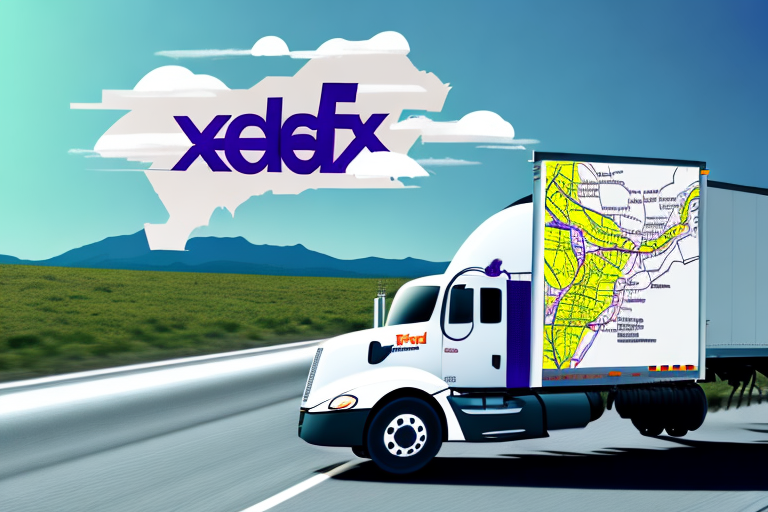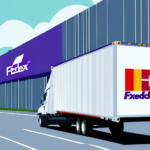Comprehensive Guide to FedEx LTL Shipping and Transit Times
If your business relies on shipping goods across the country, understanding FedEx LTL transit times is essential for efficient logistics management. This guide offers an in-depth analysis of LTL shipping with FedEx, explaining what it is, how it works, and how to calculate transit times for your packages. Additionally, we explore the factors influencing LTL transit times and provide actionable tips to optimize your shipping strategy.
Understanding LTL Shipping: Definition and Operation
Less-than-truckload (LTL) shipping is a freight transportation method designed for businesses that need to ship smaller quantities of goods without the expense of a full truckload. Unlike full truckload (FTL) shipping, LTL allows multiple shipments from different businesses to share space within a single truck. This consolidation not only reduces costs but also enhances efficiency in the supply chain.
How LTL Shipping Works
In LTL shipping, your cargo is combined with other shipments at a terminal hub. From there, it is transported to the destination terminal and then delivered to the final recipient. This process involves:
- Consolidation: Combining shipments from various businesses to optimize truck space.
- Intermodal Transport: Utilizing multiple modes of transportation (e.g., rail, truck) to enhance efficiency.
- Terminal Handling: Sorting and routing packages to their respective destinations.
FedEx LTL leverages an extensive network and advanced logistics technology to ensure timely and reliable delivery of your shipments.
Advantages of Using FedEx LTL Shipping Services
FedEx offers numerous benefits through its LTL shipping services, tailored to meet diverse business needs:
Cost-Effective Shipping
LTL shipping with FedEx is generally more affordable than FTL, especially for smaller shipments. By sharing truck space, businesses can reduce shipping costs significantly.
Flexibility and Scalability
FedEx provides a range of service levels, allowing businesses to choose options that align with their budget and delivery timelines. Whether you need standard delivery or expedited services, FedEx has a solution.
Advanced Tracking and Visibility
With FedEx’s advanced tracking tools, businesses can monitor their shipments in real-time, providing greater visibility and control over the shipping process.
Environmental Sustainability
LTL shipping is more environmentally friendly compared to traditional shipping methods. By reducing the number of trucks on the road, FedEx LTL helps decrease carbon emissions and traffic congestion. According to a EPA report, optimizing freight efficiency can significantly lower a company's carbon footprint.
Key Factors Influencing FedEx LTL Transit Times
Several factors can affect the transit time of FedEx LTL shipments:
- Distance: The geographical distance between the origin and destination directly impacts transit times.
- Weight and Volume: Heavier and larger shipments may require more time for handling and transportation.
- Service Level: Different service options (standard, expedited, guaranteed) offer varying transit times.
- Pickup and Delivery Schedules: Specific pickup and delivery times can influence overall transit time.
- External Factors: Weather conditions, traffic, and unforeseen events like road closures can cause delays.
Understanding these factors helps businesses plan and optimize their shipping schedules effectively.
Calculating FedEx LTL Transit Time
Calculating the transit time for FedEx LTL shipments is straightforward using FedEx’s online tools:
- Visit the FedEx Rate Finder.
- Enter the origin and destination zip codes.
- Provide details about the shipment, including weight, dimensions, and cargo type.
- Select the desired service level.
The tool will then provide an estimated transit time based on the provided information. It's important to differentiate between transit time (time from origin to destination) and delivery time (including processing and final delivery). Choosing the appropriate service level can help align transit times with your business needs.
Optimizing FedEx LTL Shipments for Efficiency
To maximize the benefits of FedEx LTL shipping, consider the following tips:
Plan Ahead
Advance planning allows you to choose the most cost-effective and timely shipping options. Avoid last-minute shipments to minimize delays and additional costs.
Accurate Documentation
Ensure all shipping documents are accurate and complete. Proper documentation reduces the risk of delays due to errors or missing information.
Consolidate Shipments
Whenever possible, consolidate multiple smaller shipments into a single larger shipment. This strategy can lower shipping costs and improve efficiency.
Communicate with Customers
Keep your customers informed about the status of their shipments. Transparency builds trust and allows customers to adjust their expectations if delays occur.
Tracking and Managing FedEx LTL Shipments
FedEx provides robust tracking tools to help businesses monitor their LTL shipments:
Real-Time Tracking
Using the tracking number provided by FedEx, you can monitor your shipment’s progress in real-time via the FedEx Tracking portal.
Online Shipment Management
FedEx’s online platform offers tools to manage multiple shipments, generate reports, and access shipment history, enhancing overall logistics management.
Customer Support
FedEx offers dedicated customer support to assist with any issues or inquiries related to your shipments. Utilizing these resources can help resolve problems promptly.
Choosing the Right FedEx LTL Service for Your Business
Selecting the appropriate FedEx LTL service involves considering various factors:
- Type of Cargo: Different types of cargo may have specific shipping requirements.
- Required Transit Time: Align your service choice with your delivery timelines.
- Budget Constraints: Balance cost with service level to meet your financial parameters.
- Special Handling Needs: Determine if your shipments require special handling or equipment.
Additionally, reviewing customer feedback and FedEx’s service offerings can guide you in selecting the best option for your business needs.
Addressing Common Questions About FedEx LTL Transit Times
Businesses often have questions regarding FedEx LTL transit times. Here are answers to some common concerns:
What If My Shipment Arrives Late?
If your shipment arrives later than the estimated transit time, contact FedEx customer service immediately. FedEx has policies in place to address delays and may offer solutions such as expedited delivery or compensation in certain cases.
Can I Change the Destination After Shipping?
Changing the destination of a shipment after it has been sent is possible but may incur additional fees. It’s best to contact FedEx support as soon as possible to discuss the available options.
Is My LTL Shipment Insured?
FedEx offers insurance options for LTL shipments to protect against loss or damage. It’s advisable to select an appropriate insurance level based on the value of your goods.
What Happens If My Package Is Lost or Damaged?
In the event of loss or damage, file a claim with FedEx promptly. Provide all necessary documentation and evidence to expedite the claims process.
Staying Informed: The Impact of Weather on LTL Transit Times
Weather conditions can significantly influence FedEx LTL transit times. Severe weather events like heavy rain, snowstorms, or hurricanes can cause delays. To mitigate these impacts:
- Monitor weather forecasts during shipping periods.
- Plan for potential delays during peak weather seasons.
- Communicate proactively with customers about possible delays.
Being prepared for weather-related disruptions ensures better management of your shipping schedule and customer expectations.
Conclusion
Understanding FedEx LTL transit times is vital for businesses seeking cost-effective and reliable shipping solutions. By considering the factors that influence transit times and implementing best practices for shipment management, you can optimize your logistics operations. Utilize FedEx’s advanced tools and resources to track and manage your shipments efficiently, ensuring timely delivery and customer satisfaction.
Staying informed about external factors such as weather and continuously refining your shipping strategies will further enhance your business’s shipping efficiency and reliability.




















